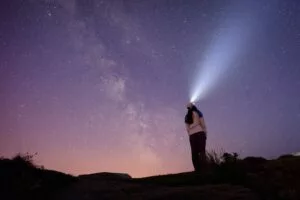
The Best Headlamps and Lanterns for Summer
Everyone has a flashlight in their pocket, if you’ve ever had to do any sort of two-handed activity in low light, you would know holding your phone sometimes does not cut it. Whether setting up a lantern for your campground, choosing a headlamp for bringing with you on the trails, or looking for a starting place for low-light activities like caving, getting the right lighting can be the difference maker between frustration and relaxation.
Read on for the best lanterns, flashlights, and headlamps in Canada.
Our top picks
What to look for in lanterns and headlamps for camping
Here are some attributes of headlamps and lanterns that can help you find the right light.
Lantern v Headlamps – Knowing which of the two would suit you better narrows down your choices quickly. Headlamps are for individual use and can be hands free – sitting in-place on your head. Lanterns can provide light over a wide range and are good so several people can eat or do activities in the dark needing a hand for lighting.
Battery type and lifespan – The battery of your headlamp or lantern needs to be dependable. Depending on where you are and what you are doing, a dead battery in a headlamp could range from a minor inconvenience to a dangerous situation.
Most headlamps utilize a rechargeable Lithium-ion battery, utilize the typical rechargeable battery (AAA and AA are the most common), or offer a choice between the two.
To try to ensure you get a lamp with the battery life you need, look at the “burn time” stat listed on the listings of headlamps or lanterns for each setting, so you know how long you can expect you can use a headlamp
Brightness – Brightness determines the power of the light. Brightness is measured in lumens, “a measure of the total quantity of visible light emitted by a source per unit of time.”
The brightness you will need for your headlamp or lantern depends on what activities you need a light for and the setting you need a light for.
If you just need a light for doing tasks around your campground, 100 lumens is enough. Nighttime running or other nighttime activities might need 200 lumens or more. If you are considering more extreme activities including caving, you will likely need multiple lights with some upwards of 800 lumens.
Beam pattern – The beam pattern or beam angle is the “measurement of the angles that are formed between a cone of light’s brightest point and the point on both sides of the centre where the light’s intensity is 50 percent as bright.” However, thinking about the width of the beam in general might be the easiest way to think about beam pattern. In specific purposes, like caving, knowing the beam pattern is very important, as it will define the area the light will illuminate. Common beam patterns include the following:
- Spot beam – narrower and more focused
- Flood beam – wider and offers more range
Construction – The components and construction of a headlamp help define how durable and reliable it is and determine what aspects of the environment the headlamp may be susceptible to or not. You also will need to consider the conditions and get a headlamp with the appropriate level of waterproofness that you think you will need.
For camping, you probably do not need anything super durable and resilient unless you plan on staying out for longer periods or you are roughing it out in the backcountry. But if you are planning to get into spelunking, not only do you need an incredibly durably constructed headlamp, you will need several of them.
The more sturdily constructed a head lamp is means the heavier the headlamp will be. Consider how much weight you will want to bring along with any headlamp or lantern.
Bonus features – These features are too specific to each get a section about why you might want to look for them but can be make-it-or-break-it features to look out for.
Additional modes, like red-light, strobes, and boost mode, can help getting the right lighting conditions. Red lighting is known to be less disruptive to both other people and your natural night vision, flashing strobes improve your visibility to others, and boost modes make getting your light as bright as it can with the press of a single button.
There are some features that help you save your battery life when you need it most, primarily including Lock-out-mode and automatic shutdown. Lock-out mode prevents your lamp from clicking on in your bag, and automatic shut down will turn off a lamp when it’s been in use for too long.
The best headlamp for spelunking
Fenix HM65R
If you need a powerful headlamp for spelunking or other low-light activities, the Fenix HM65R is a strong choice. This headlamp offers all you need in a light – strong brightness, a powerful battery, and an enclosure that can keep a beating.
The Fenix HM65R first defines itself with two powerful lenses, one dedicated to each floodlight and spotlight, which can be used independently or together. The Fenix HM65R has four spotlight modes: Turbo (1000lm for 2 hours), High (400lm for 22 hours), Medium (130lm for 48 hours), and Low (50lm for 97 hours). The HM65 also has three floodlight modes: High (400lm for 21 hours), Medium (130lm for 50 hours) and Low (4lm and 300h) for seven modes total. Being able to provide so many lumens can make this a powerful option for the absolute darkness you can find in a cave, but this lantern is versatile enough to bring it camping or using it do house or yard work. The beam distance varies based on what mode it is on, with an impressive 163-meter reach in its boost mode.
The HM65R can be powered by its USB-C rechargeable internal 18650 battery or using 2 Lithium 123A batteries. As we touched on previously, the battery lifespan depends on its brightness, but the number of hours each mode lasts is impressive. A 4-level power indicator displays the battery level and 2-sided switch controls the brightness.
The HM65R is solidly constructed to be impressively durable. Constructed from a lightweight magnesium, the result is a light, yet sturdy body that cools faster over other comparable materials. The headband is perforated, with reflective materials to improve your visibility in low-light conditions. The HM65R has a IPX6 waterproof rating, meaning that this headlamp will be able to withstand all weather thrown at it, as well as handle moisture and open water that you might encounter in certain caves. The total weight with the straps included comes to 147 grams.
Users were happy with this headlamp’s bright performance, sturdy enclosure, and lightweight frame. As a piece of gear to get into spelunking with, this gear provides versatility and dependability that caving newbies and experienced spelunkers in common appreciated. Some users found the battery did not last as long as claimed, however most users would not agree since they raved about this headlamp.
Pros
- Extremely bright, powerful, and versatile light source.
- Waterproof and highly durable enclosure.
- Extremely long battery life.
Cons
- A little expensive.
The best camping headlamp
Black Diamond Spot 350
The Black Diamond Spot 350 offers brightness, long battery life, simplicity, in an inexpensive and small package. From its top-rated position in NY Time’s Wirecutter and thousands of positive reviews online, the Spot 350 offers you the light you need, whether you are taking with you to camp or just using around your home and garage.
The Spot 350 is decently bright, with 350 lumens of brightness on its max setting. Three LED’s – two white and one red – are the sources of light for this headlamp. The directed beam of the Spot 350 performs a little below the estimated 200 feet Black Diamond suggests it’s light reaches, at around 100. This headlamp has six brightness settings, all the way down to a dim six lumen beam which is better suited to reading and low-light activities. There are a Strobe settings for visibility purposes, red-light mode so you do not disrupt your natural night vision, and wider flood settings to illuminate whole small areas, including tents. The Black Diamond Spot 350 offers a cool functionality in its PowerTap mode, instantly changing any mode to full power – for when you need light fast.
The Spot 350 is powered with AAA batteries. While a rechargeable option is more favourable (its cheaper in the long run, does not need replacements on hand) we will not penalize this headlamp for this reason. NY Time’s review found that the battery of the Black Diamond Spot 350 lasted 12 hours on high – much higher than what Black Diamond listed on their website. Still, if you are bringing this into the backcountry or you will depend on this headlamp, bring extra batteries.
At only 86 grams, the Spot 350 is light and compact. One of the better upgrades that Black Diamond has made is doubling up the buttons, making accessing different settings easy, with less shuffling through the different settings.
The Black Diamond Spot does advertise itself for being highly waterproof, however the people from OutDoorGearLabs have noticed there is no waterproof sealing for the battery, and so you should look elsewhere if you are concerned about waterproofness on your headlamps, like the Black Diamond Storm, instead.
Overall, users were very content with the Black Diamond Spot 350. It is an inexpensive headlamp, with strong water protection and decent light quality. However, some users did find that the durability of this headlamp was lacking, and that some users got a season or two of use from this headlamp. Overall, this is a strong headlamp that will not break the bank.
Pros
- Decent light brightness.
- Inexpensive.
Cons
- Not very durable.
The best backpacking headlamp
Black Diamond Storm 400
If you are looking for a headlamp with strong performance, even in wet conditions, consider the Black Diamond Storm 400. For a comparable headlamp to the BD Spot that resists water to an impressive level, the Storm is great.
The Black Diamond Storm features strong 2 LED lights, with a max lumens of 400. There is an RGB LED too for other coloured light options. With a wide, bright spot beam with a max distance of 91 meters, the Black Diamond Storm illuminates The Storm 400 features up to 8 different light modes.
The Black Diamond Storm is powered by 4 AAA batteries, with no rechargeable option to power this headlamp. At least batteries are included. The battery life is decently long lasting, with a burn time on high of 5 hours and on low at 150 hours.
The Storm features a low-profile design, with an elastic headband in a variety of styles. Weighing 120 grams when loaded with the batteries, this light is not super light, but still is compact and easily to bring along. The Diamond Storm has an impressive IPX7 waterproof rating, which signals that this headlamp is resilient to both water and dust. IPX7 suggests that this headlamp can survive complete immersion of around 1 meter for up to 30 minutes.
Overall, users had lots of positives to say about this lamp. The light works well and users are generally impressed with the battery life. Unfortunately, we saw some users complain about the durability, with plastic components like the clasps on the headband or the battery enclosure breaking mid-trip.
Pros
- Bright 400 lumen LED lights provide a strong spotlight.
- Very strong waterproofing protects from even the wettest conditions.
- Strong battery life.
Cons
- Not the most durable components
The best ultralight headlamp
Petzl Bindi
The absolute lightest headlamp on this (and coincidentally, also the one that will be going in my backpack this summer) is the Petzl Bindi. This tiny yet effective lamp only comes in at 1.2oz or 35 grams, with a streamlined shell and thinner, smaller profile. Simplicity and size are the keys to the Petzl Bindi.
The lights that this lamp feature offer a brightness of 200 lumens. The beam pattern of this headlamp is flood lighting, with three lighting modes, prioritizing proximity, movement, and distance each. At it’s furthest, the Petzl Bindi’s beam can reach a distance of 36 meters. Even with such a small size, many of the same features we have come to expect in headlamps. A red-light function allows you to preserve night vision when the lamp is in use. Reflective material used over the entire headband improves visibility in low light conditions.
The Petzl Bindi is powered by a Lithium-Ion 680 mAh battery that is rechargeable via a micro-USB charger. This headlamp offers a solid lifespan at its minimum setting (of 6lm) at 50 hours and can last at max power for 2 hours. While this is not the most impressive battery life, this battery lifespan can pull its weight through a short to medium length camping trip. Two lock functions prevent it from turning on when stuffed away in a pack.
Unfortunately, the battery enclosure is firmly closed, so your battery cannot be replaced. If the battery becomes depth-discharged, or the battery leaks, you are effectively out of luck, and will need to buy a new Petzl Bindi.
Even just looking at the Petzl Bindi, you can tell this lamp is designed for its small and lightweight size. Instead of the standard elastic headband, Petzl instead uses a thin drawstring, cutting weight significantly. While many users do not mind this design, some users find the thing drawstring uncomfortable. The rest of the Bindi is incredibly simple, with a one button design that both toggles between red and white light modes or turns the unit light on or off.
The combination of the Bindi’s smaller stature and less-than-impressive specs makes the Petzl Bindi ideal for campground and backcountry use. The Bindi is great for reading in your tent and can accommodate you out to the outhouses in the middle of the night. Its small size means you can pack this in the most tightly packed bags without a second thought.
While the lightweight cord is not as comfortable as some other elastic headbands, this is a sacrifice we are willing to make. The one downside that is rather unfortunate is the battery, which should be accessible to the users and protected against battery drain.
Pros
- Simple, yet still offers features like red light mode.
- Small and extremely light.
- Relatively inexpensive.
Cons
- Battery is inaccessible, and prone to battery drain.
- Some users did not find this headlamp comfortable.
The best budget headlamp
Petzl Tikkina
If you do not want to spend too much on a headlamp for casual camping, or use around your home or garage, consider the Petzl Tikkina Headlamp. This $25 headlamp is dependable, long-lasting, and bright enough for everyday use.
Featuring a single LED light, the Tikkina is not going to blow you away in how bright it is, but you should still find the quality of the light decent for its price. With a max output of 250 lumens, the Tikkina is at the low end of the headlamps we included on this list. What’s even more impressive though is that the beam was found to reach distances of up to 62 meters!
For a cheap headlamp, it might be surprising that this is both decently bright and has a decently long lifespan. At its highest settings, it will only last two hours, but on low, it can provide light for up to 120 hours. The Tikkina can be powered with standard NiMH batteries, or with a Petzl CORE battery pack. Due to issues with corrosion, use the CORE battery pack or batteries resistant to corrosion, like Energizer. However, note as the battery drains, the light does gradually decrease.
The Tikkina’s M.O. is simplicity, so it’s almost expected that a single button turns the headlamp on and cycles between the brightness settings. There are no bonus features that other lamps offer – there’s no red-light, there’s no strobe setting of any kind, there’s just light in three settings.
The Tikkina is small and packable, coming in at 81 grams. The elastic headband is detachable and washable. With an IPX4 waterproof rating, the Tikkina lamp can be used in wet conditions like light rain, but overall, this lamp does not have robust water protection.
For a budget-friendly headlamp, users were overall content with the modern Petzl Tikkina. On the user reviews, the Tikkina scored well in its simplicity and light quality, especially since in the last few years, the Tikkina has seen a lumens boost. However, there are some durability concerns, with some users finding that a season or two of use resulted in an ineffective Tikkina. The Tikkina as a budget headlamp is still limited to some of the bigger flaws of budget headlamps – longevity and durability. We suggest not looking to invest into the Petzl CORE battery pack with this headlamp alone – save your money.
Pros
- Improved brightness makes this worthwhile for its price.
- Decent battery life.
- Simplistic, intuitive controls.
Cons
- Not exceptionally long lasting or durable.
- Basic functionality.
The best headlamp for running
Black Diamond Sprinter 275
There is a lot of reasons you might need to use a headlamp, and there are different head lamps for different uses. If night running is your use, then consider the Black Diamond Sprinter 275, which brings the headlamp titan’s expertise to the running scene.
First, the light. The Black Diamond Sprinter features LED lights with a lumen rating up to 275 on its max setting. The beam projects brightly up to fifteen feet ahead and illuminates your surroundings enough to keep you on track. Six different light settings allow you to get different illumination when you need it. In addition to the front facing headlamp, the Sprinter 275 also features a rear facing red-light strobe so vehicles and other runners see you from behind. Like other Black Diamond headlamps these days, the Black Diamond Spot 275 features PowerTap technology, to instantly transition to full power beams or dimmer lighting, as well as Brightness Memory functions which allows you to turn on the headlamp to your desired brightness level.
The Black Diamond Sprinter is powered by either a lithium-ion battery, or AAA batteries instead. In testing, Wirecutter found that the Sprinter could last 12 hours on one charge, although that was admittedly with the rechargeable batteries.
At 110 grams, the Black Diamond Sprinter is heavier than many of the other headlamps on this list. One of the most striking visual characteristics of the Sprinter headlamp is the band. With a typical band design across your head and another band running on top, the Sprinter provides stability. The perforated elastic headbands proves to fit tight, but stays completely secure, even on top of big hair or a hat. The Sprinter’s angle can adjust so you can shine the beam onto the road ahead of you or towards any on-comers. The Black Diamond Sprinter has an IPX4 Rating, meaning it can be used in dusty or slightly wet conditions with no worries, but note this rating does not suggest it can be used underwater, or you should not worry about this device getting drenched. We will talk more about this later.
Overall, users thought the Black Diamond Sprinter is ideal for running and biking. Users like how this headlamp fits in place when running and found the reverse taillight strobe super handy for visibility. However, there are somethings we would like to see improved – especially the water resistance. Over time, some users found that moisture from the environment or from their sweat could interfere with the performance of this device, at times interfering with the battery.
Pros
- Offers a white beam for forwards for visibility and a red strobe from behind so others can see you.
- Very secure when on your head
Cons
- The IPX4 rating is not as resistant to moisture and sweat as a running headlamp should be.
The best camping lantern
The best camping lantern
If you are looking for a source of light for your base camp, the Goal Zero Lighthouse 600 is a strong choice. This lamp is bright, versatile, and great to bring out to your favourite campsite.
With a 600-Lumens power light, this lamp is bright enough to illuminate a campsite effectively – perfect for your basecamp or for inside a large tent. It has a fully adjustable dimmer, so you can dial in the right amount of light you need. The power knob lets you choose between 180-degree and full 360-degree light source. There is a red-light feature on the top of the unit, however this seemed to be significantly weaker than the main light source.
One aspect we really like with the Goal Zero Lighthouse 600 is the multitude of ways to recharge the battery. A USB-cable recharges the Lithium-ion battery when you do have access to power, or a hand crank lets you top up the battery when you are away from power. You can even combine this lantern with a solar panel from Goal Zero to recharge your lantern during the daytime.
The range of burn-time with the Lighthouse 600 varies depending on its settings, ranging from just 3 hours of 360-degree max-power light, or up to 13 days of continuous light on its lowest setting with 180 degrees of light.
The Goal Zero is a decently sized lantern, weighing in at 567 grams, and measuring 11.4 x 12.7 x 16.5 centimeters. The Goal Zero is compact, with legs and a handle that fold into itself. The rubber-coated legs are wide and stable, even sitting sturdily on uneven surfaces. There is no IPX rating for the Lighthouse 600 however, so that means this lantern is not waterproof and should be moved under cover if it starts to rain.
Overall, users seemed impressed with this lantern for bringing out camping. The size is packable and compact, the light is bright and extremely adjustable, and the battery is long lasting and impressively versatile. While we really like the feature set of the Goal Zero Lighthouse 600, there are some aspects of it that limit its use of application and might make you consider other lanterns. Certain components, such as the USB cord, are lacking in durability, and the fact that you cannot unplug or replace this component easily is a negative. This lamp is a little bit on the expensive side too.
Pros
- Extremely bright 600-lumens light.
- Can be charged via USB cable, crank, and (not-included) solar panel.
- Multiple lighting options, like 180-degree lighting or fully adjustable dimmer.
Cons
- USB cable is built-in and not very durable.
- A little on the expensive side.
The best string lanterns
MPowered Luci Solar String Lights
If you enjoy the type of atmosphere that fairy lights or string lights contribute to your space, these Luci Solar String Lights are a great choice for your backyard, balcony, or even campsite.
String lights cover a lot of area with light. Even if these MPowered Luci lights only pack about 100 Lumens, the individual light pods – ten total – each do their part to provide decent illumination to a space. Each pod includes 2 LEDs, to ensure 360-degree light from each pod.
One of the coolest features of the MPowered is its solar rechargeable battery. The MPowered Luci String Lights charge over the course of the day (around 16 hours for a full charge, according to MPowered) and provides 20 hours of runtime. Not needing to remember to charge these lights will make them a hit for your outside space or campground. In the case that the sun hid behind clouds all day, you can charge via USB for full charge in 6 hours. There is a USB out port, which can take excess energy and boost the battery of a small device like a phone – but this is a slow process, even if it is kind of handy.
With an IPX4 waterproof rating, this light string can withstand some moisture from precipitation, however a rating this low does not ensure protection from heavy precipitation. However, OutDoorGearLabs said in their testing, their lights worked well after withstanding a rain shower. Just keep in mind to let the cord dry out completely before storing it, as moist conditions inside the enclosure might lead to mildew or mold accumulating,
Overall, users were overly impressed with these string lights. The quality of the components is decent (with some small issues with the product out of the box), the lights do their job well, and the versatility of the solar/USB charging system is the coolest feature by far. While we would usually recommend against bringing string lights camping, the durability and solar power make these the choice for that use.
If you have the infrastructure to easily hang them (like in a tent, or on a tree), the effect these lights can be breathtaking, but some users did not that hanging up the string lights might be a difficult tasks in some situations.
Pros
- Decently bright, 360-degree angle light.
- Both solar and traditional charging methods.
- Strong quality.
Cons
- Not as waterproof as we would want to reliably leave in cases of rain.
The best solar powered lantern
LuminAID PackLite Max 2-in-1
While we have listed many different lanterns with some sort of solar-rechargeable battery, the best in terms of its solar powered performance is the LuminAID PackLite 2-in-1. It is not the brightest, but offers the most functionality for its solar panel, with a decent charge-out port
The LuminAID Packlite Max has a maximum lumen of 150 lumens, which puts its max lumen count near the bottom of the lanterns we have covered so far. The PackLite Max features five brightness modes total: Turbo (150lm), High (75lm) Medium (18lm) Low (15lm) and a flashing mode (15lm). The light passes through the vinyl enclosure to create a soft, even light which does not feel unnaturally white.
There are two ways to charge the PackLite Max: the aforementioned solar power, or via micro-USB. For a full charge, it takes 14 hours in sunlight or 2 hours attached to a micro-USB power source. The battery life lasts about 40 to 50 hours on low modes, and between 2 or 3 hours on turbo mode. We like the fact that the LuminAID PackLite has a green four LED battery indicator for power level, and red single LED indicator to show when the solar panel is charging. The latter red single LED is really helpful on cloudy days and later on during the evening when the sun might be going down. The charge out port is okay but might charge your phone or other devices at a snail’s pace like some other lanterns with this feature.
The LuminAID packs down flat to a dimension of 6’ x 6’ x 1’ and inflates to a 6” x 6” x 6”. Overall, the LuminAID weighs only 240 grams. With an IP67 waterproof rating, this LuminAID PackLite is protected from both water and dust – although the micro-USB port’s cover might not do enough to protect the port specifically. However, do note that the LuminAID’s enclosure is not puncture proof. Overall, durability is decent, but don’t let your dog treat this like a toy and avoid dropping this unit on its solar panel. We also recommend folding up this lantern during the day, as the sun can change the properties of the lantern enclosure if exposed for too long.
Overall, users were happy with the functionality and price of this, although some were less than happy when trying to charge their phone with this unit. The inflatable enclosure and packable size makes this an easy lantern to throw in a bag and take with you to campouts or barbecues. It is not durable enough to be set up and be forgotten about, but if you treat this lantern well it should last for a while.
Pros
- Solar rechargeable with both a USB in and out port.
- Packable and lightweight.
- Inexpensive.
Cons
- Prolonged sunlight exposure can reduce the enclosure’s lifespan.
The best compact lantern
Goal Zero Crush Light
If you are looking for a solar powered light that is inexpensive, packable and works well, the Goal Zero Crush is an excellent place to look. For some extra light around the campsite or in your tent, the Goal Zero Crush is perfectly suited.
First off, we should mention that the brightness of the Crush is very much on the low-end. At only 60 lumens, it is significantly dimmer than some of the high-end options available. With 5 different LED lights included, it does offer a consistent shine radius and provides a diffused soft light.
With the aforementioned solar rechargeable battery, you just have to leave the solar panel revealed to the sun. You can also plug into the USB input to charge more quickly or if you are charging in the dark The Zero Crush has three levels of intensities to choose from. At high intensity, the Goal Zero Crush only lasts 3 hours at full charge but can last over 30 on its low setting.
The collapsible body is compactable and resistant to puncture. This type of design really handles well when packed, folding down to just a 5” x 5” square. The Goal Zero Crush has an IPX4 waterproof rating – which seems underselling the waterproofness protection. The seal on the USB port (one of the main weak points) is actually secured and OutDoorGearLabs found that they could even fill up the lamp with water and have it still work afterwards.
Overall, users liked this lantern for it’s handiness and inexpensiveness. It’s not exceptionally bright, but for using for card games, meals, and trips to the outhouse, it performs adequately. The battery is decent too. We saw most of the negative reviews were from people who mixed the Zero Crush with the Zero Crush Light Chroma lantern on Amazon, which has different coloured lights – not a gimmick we are upset about not having. There are some concerns that were common among some users – frustrations with the durability of the solar panel and other durability issues made up of the portion of complaints. Overall, users found this cheaper light great for any scenarios that they needed a dim but super packable light.
Pros
- Inexpensive.
- Durable and foldable enclosure.
- Can be entirely solar powered.
Cons
- Not very bright.
- Durability issues.
Our methodology
When looking for a source of light for your summertime activities, getting the right light for your use can be the difference between a safe trip or an unfortunate accident. Knowing what type of beam shape, brightness, distance, and battery life a headlamp or lantern has will give you a good idea of what types of activities a lamp or lantern will be equipped to illuminate. A dedicated red-light mode or a strobe feature will be good for not disrupting others or improving your visibility, respectively. Waterproofness and sturdiness of the components will also define the durability and the dependability of a lamp.
We spent over 15 hours researching headlamps and lanterns for this article. We reviewed the specs of each headlamp and lantern, professional reviews of each product, and verified user reviews, to ensure we got a fuller picture of the functionality of each lamp.
Frequently Asked Questions
How should I maintain and store my camping lantern?
Our recommendation for figuring out storing your lantern first involves reading the product guide for any storage hints. If the guide does not have any words of wisdom for storage, make sure everything is dry and clean before putting away. You might also consider removing the battery to prevent battery corrosion and improve their lifespan.
How many lumens for camping lantern?
While you can get camping lanterns with lumens upwards of 1000lm, you genuinely do not need anywhere near this level. For typical camping scenarios, you will not need more than 60 lumens, although if you plan on doing nighttime or very low-light activities, then High Lumen headlamps of 200 lumens or more are safer and preferable.
How bright is that?
For comparison’s sake, your phone’s flashlight produces 40-50 lumens of light.
How to make a water bottle lantern?
Water has some unique properties when it comes to reflecting light. If you want to improve the size of your headlamp, you can use a plastic bottle like a Nalgene like this.
Read more

Hiking Guide: Getting the Most out of Day-hiking and Backpacking
Hiking can be the best way to enjoy the sights and sounds of nature. This guide will help you get started.
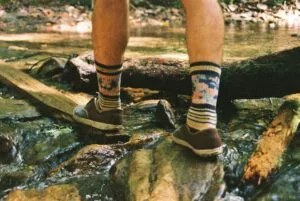
The Best Hiking Socks in Canada
A good pair of hiking socks will keep your feet nice and comfortable during any season.

The Best Windbreakers in Canada
Windbreakers are the perfect jacket to wear for your outdoor adventurers.

The Best Camping Chairs in Canada
Whether camping, barbecuing, fishing or relaxing in the backyard, do so in comfort with these camp chairs.
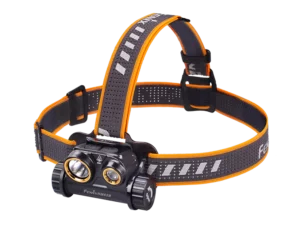
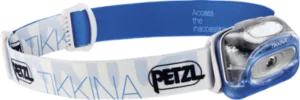

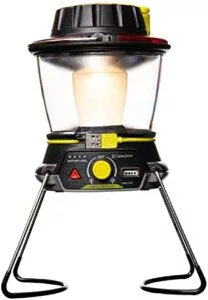
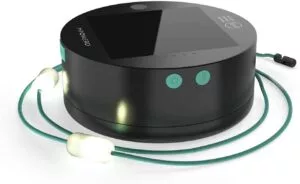
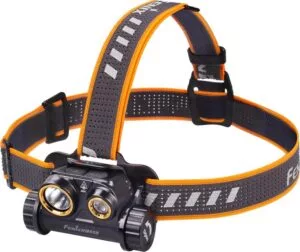
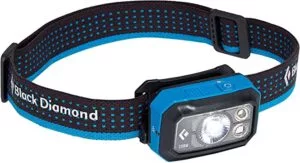

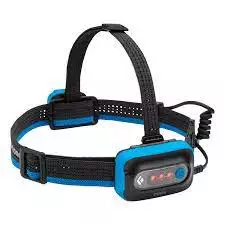
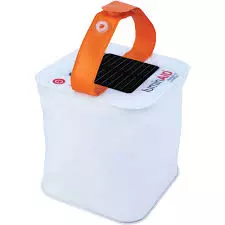
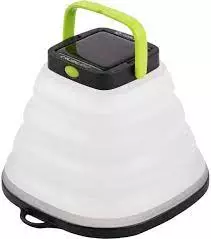
best allergy medication for itching allergy medications for itching skin allegra side effects